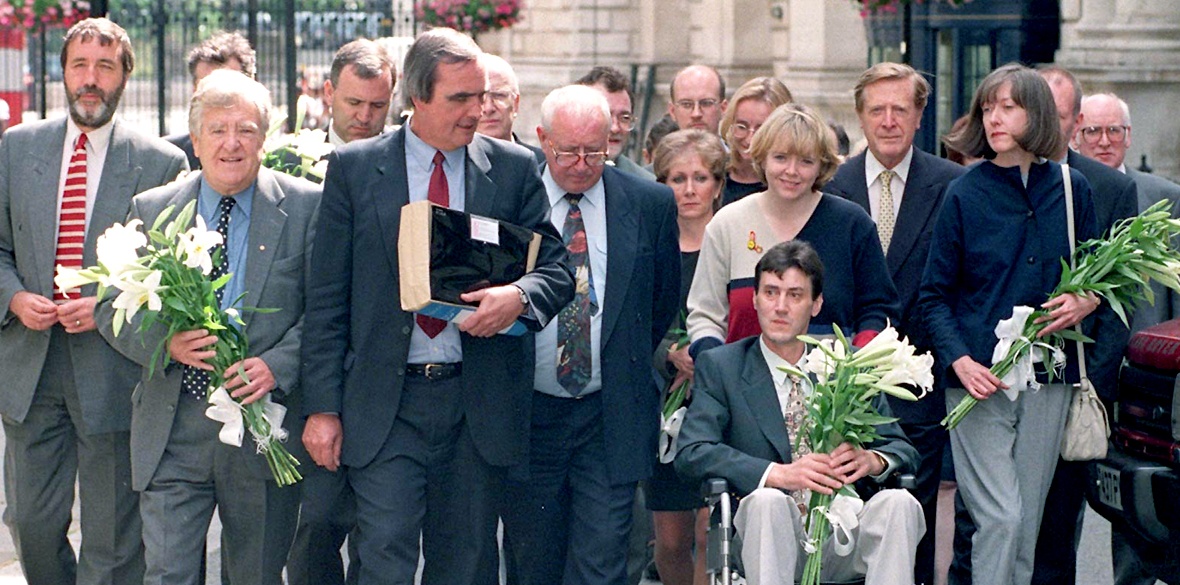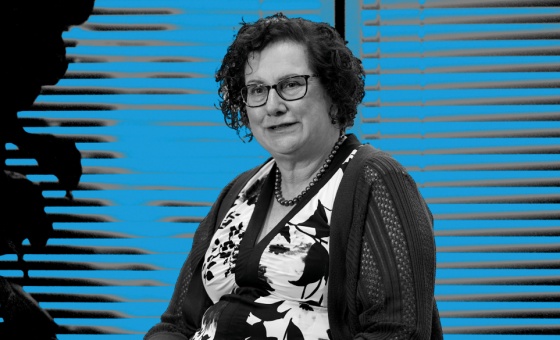This is the last article you can read this month
You can read more article this month
You can read more articles this month
Sorry your limit is up for this month
Reset on:
Please help support the Morning Star by subscribing here
THIS week, people who were given contaminated blood while schoolchildren in the 1970s and ’80s have been giving evidence at a public inquiry. They were sufferers of haemophilia and were pupils at Treolar’s College, which had an NHS treatment centre to provide them with specialist care. As part of that care, many were infected with viral hepatitis or HIV, and died.
In a response to injury in somebody without haemophilia, an intricate set of protein reactions are set off within the blood. Proteins that normally circulate in blood freely bond together to change the consistency and stop the bleeding, producing a clot. There are several important proteins or “factors” involved in the clotting.
Haemophilia is a genetic condition, people with haemophilia A have mutations in the gene which encodes the sequence of the clotting protein called “Factor VIII.” This means that their blood contains only very low levels of functioning Factor VIII.
There are different mutations that lead to different magnitudes of deficiency, ranging from near-total elimination of production of the protein to merely decreased amounts. Reduced clotting in the blood is dangerous since it means more frequent and prolonged bleeding, both externally and also internally.
An effective way to treat the condition is to increase the levels of Factor VIII in the blood. In the 1970s, the only way to do this was to take blood from people without haemophilia, concentrate the protein from it, and then reinject this Factor VIII medication into those with the disease. This was the treatment that became common for the pupils at Treolar’s College.
The NHS had to import Factor VIII from other countries, including the US. Batches were made by pooling blood plasma from up to 10,000 people. If only a small number of those were infected with HIV, the whole batch could be contaminated. Once trace amounts of the virus got into a new person, such as a pupil at Treolar’s College, it could start to replicate and infect them too.
Just 32 of the 122 pupils who were at the school are left alive today. The way the pupils were told was almost as shocking as the disaster itself. As former pupil Ade Goodyear told the BBC, he was sent in to see a doctor in a small group of other boys: “The doctor was upset and pointed at us and said, you have [HIV], and you haven’t. And I was back in science by 1.50pm. I didn’t even get the afternoon off.”
It is horrific that children were infected with fatal viruses, along with around 30,000 other people in Britain. As the inquiry is hearing, negligence and cover-up may have played a role in the size and scale of the scandal. One sufferer found that doctors had hidden an HIV diagnosis from him for two years.
But the scandal does not just affect Britain and the NHS. Although screening of blood for the presence of HIV was not available until 1985, from July 1982 it was reported that haemophiliacs had contracted HIV, probably from contaminated blood. Concerns grew.
In 1984 the US pharmaceutical company Bayer began making a safer version of Factor VIII in response to these concerns, heat-treating the plasma so as to destroy the virus, even without screening. But they still had lots of the original nonheat-treated product. It was starting to become difficult to market this in Europe.
Their solution was to keep selling a product they knew was probably deadly, but to do so abroad: they shipped it to Asia and Latin America instead. Documents proving this were uncovered by the New York Times in 2003.
Dr Sidney Wolfe of the Public Citizen Health Scandal Group called them “the most incriminating internal pharmaceutical industry documents I have ever seen.”
Other companies also kept selling unheated Factor VIII after manufacturing a heat-treated product, but few records remain. No one person made a single decision to risk the lives of others: the system of profit made it easier for corporations to take incremental decisions to safeguard their returns, not people’s lives.
One internal document from 1985 asked rhetorically: “Can we in good faith continue to ship nonheat-treated coagulation products to Japan?” The decision was that they could. They killed people in an explicit form of “social murder.”
The US government was also complicit, protecting the companies from public outrage. One official at the Food and Drug Administration was angry in 1985 when they discovered that the old version was still being sold overseas – but still wanted the issue settled “quickly and quietly” out of the public eye.
Foreign governments chose to believe the assurances they were given that the concerns about HIV were “unsubstantiated speculation,” to quote one Bayer letter to foreign distributors from 1983.
It is horrific to think of those who were infected at Treolar’s College. But the same is true of those who the blood came from. They too unknowingly contracted a fatal virus. The roots of the contaminated blood scandal were societal.
The stigma around HIV and hatred of the communities who were most vulnerable contributed to the unnecessary deaths of thousands. Blood for haemophilia treatment was paid for and there was a deadly overlap between those who relied on selling their blood to survive and those who were vulnerable to infection with HIV. The suffering and loss of people infected with HIV is on a gargantuan scale.
Reckless profit from people with HIV extended beyond the school gates of Treolar’s College, where the British press chased the young teenagers who found out they were HIV-positive. The product was different but the motive is the same: profit from human bodies, without respect for their humanity.
Subjecting the production of blood products to the capitalist logic of competition and profit maximisation led to disastrous results. Even when it was apparent that the product was deadly, the expense had already been incurred: the blood bought, the Factor VIII extracted, the medicine stored.
That all cost money. The inexorable logic of profit meant that the chain had to be completed by selling the product, whatever the social cost.









